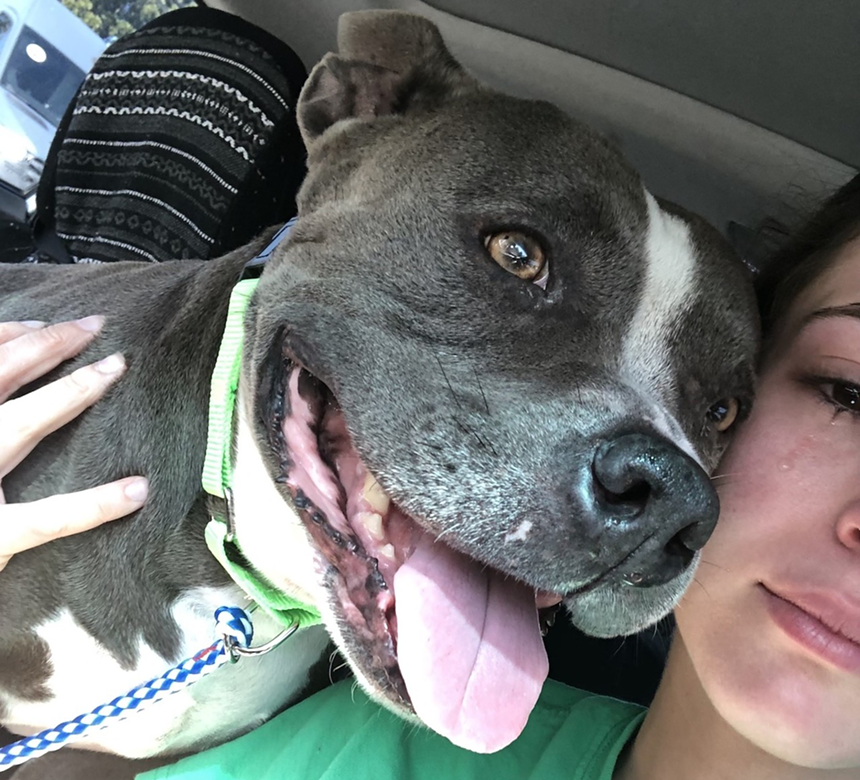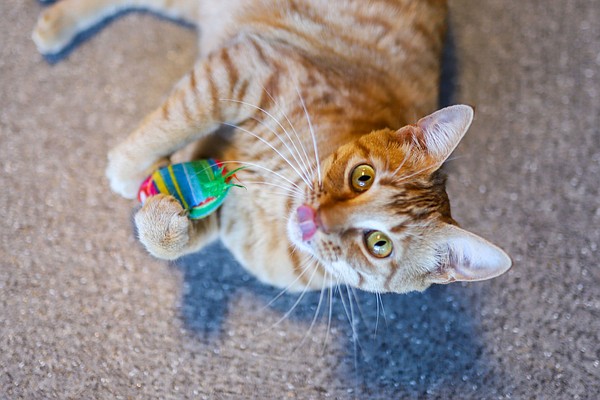On Christmas Eve, Lucy Rosario picked up a gray and white pit bull she found wandering the streets of her Miami neighborhood. She feared he would be hit by a car. When she arrived home, she took photos of the dog – which she named Lola – and posted them on Facebook, Instagram and Nextdoor. She contacted animal rescues and walked for miles around the neighborhood asking passers-by if anyone recognized Lola. Nobody did.
With two dogs of her own and another she raised, Rosario knew she couldn’t keep Lola. After several days, she brought the dog to Miami-Dade Animal Services in Doral. But when she arrived at the shelter without a kill, a line of people with dogs was turned back. Eventually, Lola too was rejected.
“They denied everyone who was in line,” says Rosario new times. “As a result, a person attached [a dog] up to the fence and trying to leave.”
The county shelter saw its population peak in early December, says Kathleen Labrada, assistant director of Miami-Dade Animal Services.
Jesse Scott
The early days of the pandemic saw a growing demand for pets, but shelters across the country are now at capacity, signaling a lack of funding and staffing. In Miami-Dade, stray animal arrivals are expected to increase nearly 18% to 32,400 in 2021, according to figures from the 2022 Animal Services Budget. The shelter’s population peaked in early December and is still “very full” of cats and dogs, reports Kathleen Labrada, assistant manager of Miami-Dade Animal Services.
“The shelter had a capacity issue, where the number of dogs coming in exceeded the number of housing units available,” Labrada said. new times. “So we started looking at creative ways and best practices that other large shelters across the country have implemented in managed admissions.”
According to the shelter’s website, it welcomes nearly 30,000 animals each year, “regardless of their age, breed, state of health or temperament”. But now, employees are setting aside space for animals in need, such as those perceived to be in danger, injured, abused or neglected, Labrada says.
Over the past few weeks, Jamie Robinson, founder of the nonprofit organization Jamie’s Rescue, has fielded daily calls and texts from people like Rosario who have found stray or lost dogs on the streets of South Florida and don’t know what to do as most shelters and rescues are at capacity.
She says several low-cost spaying and sterilization clinics have closed in recent years or have been temporarily closed during the pandemic. As a result, dogs are breeding at a rate the county cannot handle.
“The situation in Miami Dade County, in my opinion, is one of the worst in the country,” Robinson said. new times. “It’s really, really, really bad right now.”
A few weeks ago, Robinson found a stray pit bull tied up near her home and tried to bring him to the shelter, only to be told there was no room there. She has anecdotally overheard animal service workers telling residents to abandon animals on the streets.
Rosario says that’s what happened when she brought Lola.
“I was like, ‘What am I supposed to do?’ And they say, “Well, you gotta go around the neighborhood and see if you can find the family. And I told them I did that. I told them I did everything I could,” Rosario says. “They were like, ‘OK, well, put it back where you found it, and I hope it comes home. .'”
 Animal Shelter. – COURTESY OF LUCY ROSARIO” width=”760″ height=”689″/>
Animal Shelter. – COURTESY OF LUCY ROSARIO” width=”760″ height=”689″/>
Lucy and Lola in the car leaving the Miami-Dade Animal Shelter.
Courtesy of Lucy Rosario
Labrada confirms that the shelter has asked people who find stray animals on the streets to leave them in the area where they found them “as long as it’s safe.” She says most of Miami’s strays are simply lost dogs, citing research that shows 70% of strays were found within a mile of their home.
While she understands that well-meaning people like Rosario want to help animals, she doesn’t think taking them to a shelter is always the best solution.
“By picking up an animal and holding it or bringing it to a shelter, the intentions are good but it’s not the best way to help the animal,” says Labrada. “So if they’re left in the area they know, chances are they’ll go home.”
Rosario says she left the shelter in tears.
“How am I going to put it back in the middle of the street? I’m not going to do that,” she said. “I was sobbing because I didn’t know where to take this dog.”
After contacting a handful of rescue groups in South Florida, Rosario found one that agreed to take Lola in. But she knows many other dogs aren’t so lucky, and she worries about the fate of other strays in Miami-Dade.
“I’m grateful that since I know about rescues, a rescue agreed to help me, even though it was difficult,” Rosario said. “But anyone else wouldn’t have gotten the help.”
 Christ Yoder
Christ Yoder



